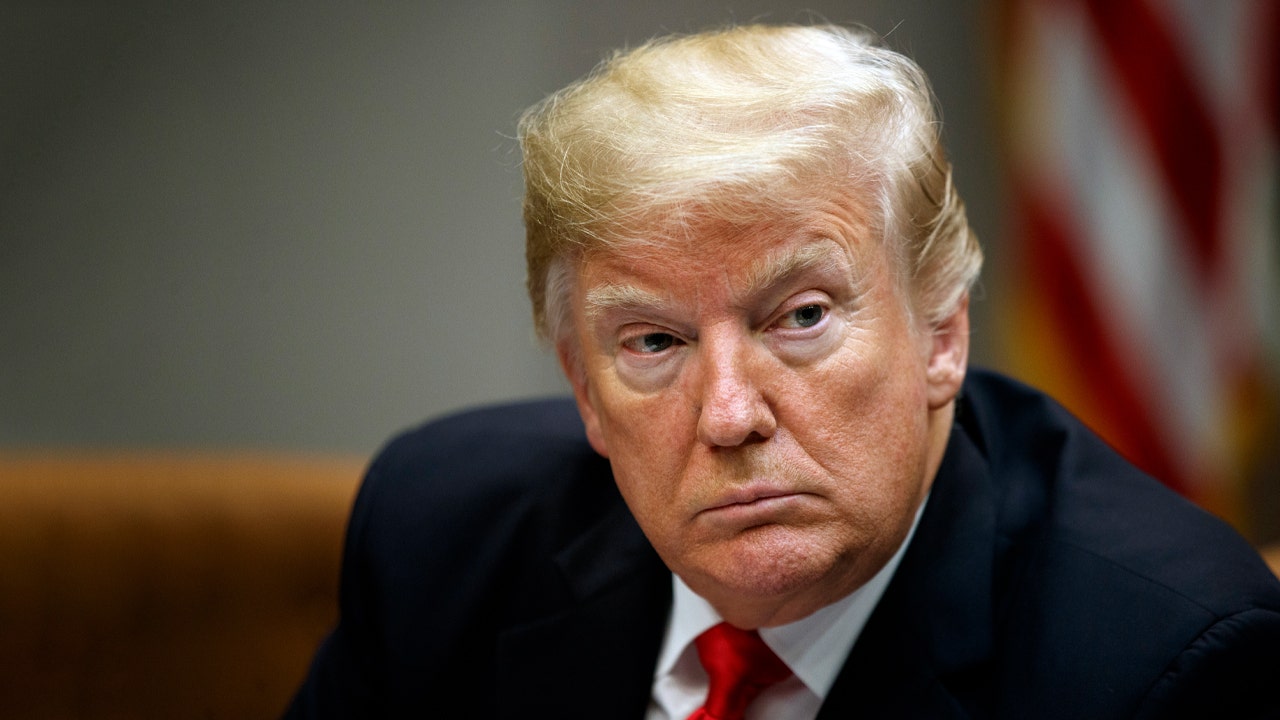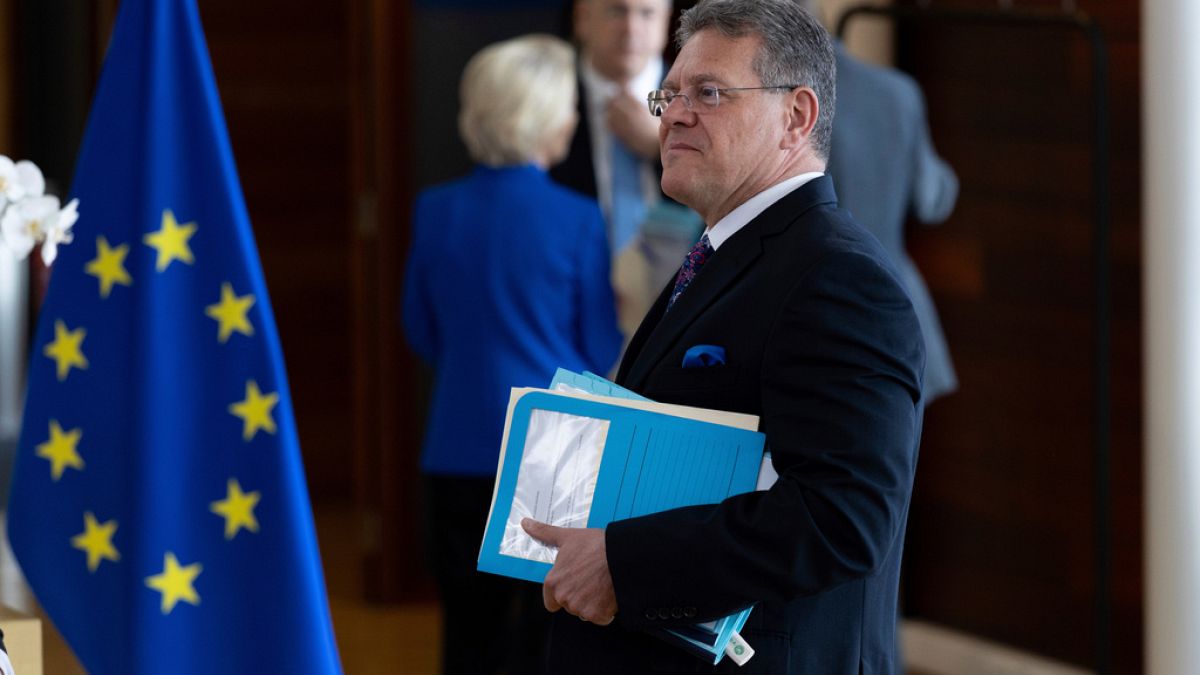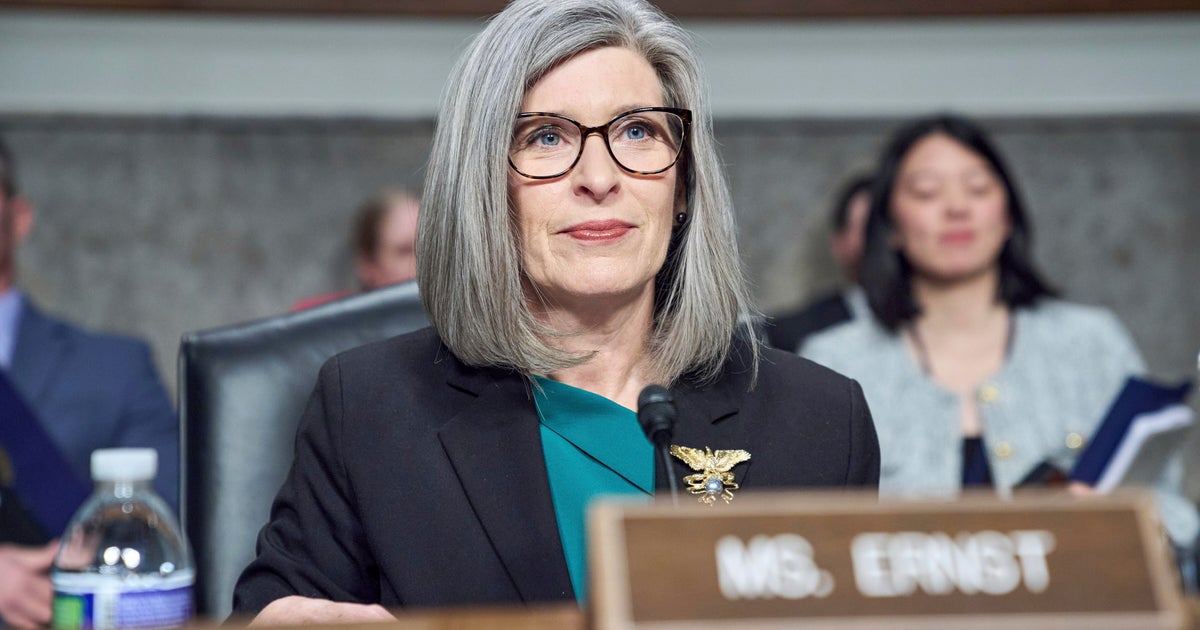New York
Schumer Wields Political Heft in Bid for New York Chips Funds

In a darkened hotel ballroom in San Jose, Calif., last November, the most powerful players in the semiconductor industry received a familiar sales pitch.
Senator Chuck Schumer, the majority leader, appeared by video message to urge the industry titans at the Semiconductor Industry Association’s annual awards dinner to work together to strengthen American manufacturing of a critical technology — and to invest more in his home state of New York.
“I ask that more of the industry consider investing in the Empire State, and if you do, you’ll find no greater champion in your corner than me, the Senate majority leader,” Mr. Schumer said, to cheers and laughs of recognition from a crowd accustomed to the senator’s solicitations.
Amid growing fears about China’s dominance of technology and America’s loss of competitiveness, Mr. Schumer last year helped rally Congress to push through the biggest industrial policy programs the United States has seen a generation. The Biden administration is now preparing to invest tens of billions of dollars in the U.S. semiconductor industry in an effort to boost chip manufacturing across the country and lessen U.S. reliance on foreign factories.
If Mr. Schumer gets his way, a substantial part of that funding will flow to New York.
In his encounters with chip executives, Commerce Secretary Gina Raimondo and President Biden himself, Mr. Schumer has openly and aggressively drawn on his political capital as majority leader to try to channel investment to his home state. During the months where Congress was debating whether to approve that funding, industry executives who set foot in Mr. Schumer’s office or spoke to him on the flip phone he carries in his breast pocket were asked when, not if, they would invest in New York.
Mr. Schumer, a longtime China critic, primarily views the investments as critical to reducing America’s reliance on Beijing for a technology that powers everything from cars and dishwashers to missiles and fighter jets. Most chip production has moved to Asia in recent decades, leaving the U.S. economy highly vulnerable to shortages, as became apparent during the pandemic.
But he also saw the opportunity to fulfill a more personal goal: securing investment that could revive the factory towns of his home state, which had been hollowed out through decades of competition with China. The move would also augment his local political support, attract donations from chip companies to fill Democratic coffers and cement his legacy as a proponent of upstate New York.
“I cared about upstate and I cared about competition with China,” Mr. Schumer said in an interview in Albany in June. “When I drafted the legislation, I did things with New York companies in mind.”
Senate majority leaders and other legislators have long used their clout to drive federal funds back home. But Mr. Schumer is capitalizing on his position at an opportune moment, as the United States prepares to invest nearly $53 billion in the sector, including $11 billion for chip research and $39 billion in manufacturing grants.
Still, some critics have cautioned that economic and strategic factors, not political influence, must determine the investment decisions that could shape the U.S. economy for decades to come.
If the proposed investments are realized, New York could become one of the country’s busiest hubs for chip production. Chip makers like GlobalFoundries, IBM, Onsemi and Wolfspeed are applying for funds to build or expand facilities there. Micron Technology, a memory chip maker, is proposing to invest up to $100 billion near Syracuse over the next two decades to build what would be the largest high-tech chips facility proposed in the United States, employing up to 9,000 people.
Mr. Schumer is also pushing for New York to play a leading role in semiconductor research, as the headquarters of a new federal chip research organization.
Competition for federal funding is expected to be fierce. By late June, the Commerce Department — which will dole out the funds — had received nearly 400 statements of interest from companies that intended to apply for money.
“I suspect there will be many disappointed companies who feel that they should have a certain amount of money,” Ms. Raimondo said in February.
New York has already faced some setbacks. Taiwan Semiconductor Manufacturing Company, Samsung and Intel, makers of the most cutting-edge types of logic chips, passed over the state in recent years in favor of Arizona, Texas and Ohio, where they are now building large facilities that could absorb a significant portion of government funding.
Chip industry executives say practical factors, like the cost of electricity, land and capital, the availability of workers and the proximity of their suppliers, weigh heaviest in their decisions about where to invest.
But the pressure from Mr. Schumer — and from other influential lawmakers, university presidents and company executives who helped secure the funding — raises questions about the role powerful political figures will play in the next chapter of American industrial policy.
“I think there is and ought to be a lot of skepticism about political players having a major say in decision making over where these funds are spent,” said Chris Miller, an associate professor at Tufts University and the author of “Chip War: The Fight for the World’s Most Critical Technology.”
“If you want effective industrial policy, you have to keep it as far away as possible from pork barrel politics,” he said.
The Commerce Department has been hiring experts in finance and semiconductors to review company applications, and it has set up a selection committee to chose the board for the new research center, called the National Semiconductor Technology Center. The department appears to be trying to avoid any undue influence or favoritism.
“Our awards will be entirely dependent upon the strength of applications and which projects will advance U.S. economic and national security interests,” the Commerce Department said in a statement.
Mr. Schumer insists that New York will win federal dollars on its own merits, but he is also explicit about the benefit his position brings. In June, as he walked the sunlit halls of the Albany NanoTech Complex, a long-running chip research and educational facility, Mr. Schumer said he “did not close out a single discussion” with a semiconductor company without encouraging them to invest in New York.
New York has five main advantages, he told executives: Skilled workers, stemming from New York’s history of manufacturing. Cheap and plentiful water. Cheap hydropower. Shovel-ready sites for companies to build on.
“And fifth, they had the majority leader,” he said.
In a yellow-lit clean room behind Mr. Schumer, workers in white protective suits were tending to hundreds of millions of dollars of advanced machinery. On tracks overhead, mechanized metal pails whizzed by carrying silicon wafers, each roughly the size of a record, to and from the machines, where they would be imprinted with layers of intricate circuitry.
Mr. Schumer paused to peer over his reading glasses at a smooth, white box the size of a mobile home: an extreme ultraviolet lithography machine, made by the Dutch firm ASML, arguably the most advanced piece of machinery ever developed.
Albany NanoTech is the only public research facility in the United States with such a machine. The facility is applying for federal funding to build a new clean room in an adjacent parking lot, and it hopes to become home to part of the government’s new research center.
“This is the perfect place,” Mr. Schumer said. “When we wrote the CHIPS and Science bill to set up a National Semiconductor Technology Center, I had Albany in mind. And I’m pushing to get it.”
Mr. Schumer said he had personally made that case to a parade of administration officials he brought through the state. That included Mr. Biden, who was pitched on New York’s potential as the two men rode in a motorcade to hear Micron’s investment announcement last October.
By his telling, Mr. Schumer’s efforts on behalf of upstate New York are a personal mission, stemming in part from an early challenge from a political opponent who told voters they would never see Mr. Schumer, a Brooklyn native, west of the Hudson River. As Mr. Schumer watched companies like General Motors, General Electric and Carrier shutter their New York facilities, he said, he vowed to do something to stop the flow of young people out of the state.
Mr. Schumer had also been one of Congress’ earliest China hawks, particularly on the issue of Chinese currency manipulation. During a workout in 2019 in the Senate gym, Mr. Schumer began forming a plan with Senator Todd Young, Republican of Indiana, to bolster the U.S. economy by dedicating over $100 billion to technology research.
It took two years — and an aggressive, coordinated lobbying effort between government and industry — to amass the support and momentum to turn that bill into law. Mr. Schumer and other key Republican and Democratic lawmakers enlisted company executives, university presidents and state officials to talk publicly about the importance of the funding, and put pressure on reluctant members of Congress.
Mr. Schumer also worked closely with Ms. Raimondo to push the bill forward. He called her frequently as obstacles arose, including during Sunday Mass and her daughter’s 18th birthday party, she said in an interview in July 2022.
As the bill progressed, the prospect of funding for new U.S. factories touched off an elaborate game of courtship among legislators, state officials and companies.
The number of chip lobbyists in Washington multiplied. Companies like GlobalFoundries and Intel, which stood to benefit enormously from the legislation, hosted or attended fund-raisers and virtual events for Mr. Schumer in the months before the CHIPS Act was passed. From the beginning of 2021 through June 2023, political action committees linked with Mr. Schumer received more than $350,000 in donations from executives at chip companies and their suppliers, including a $5,000 donation from Intel’s chief executive, Pat Gelsinger, data from the Federal Election Commission shows.
New York played host to a series of chip companies considering potential investments, particularly for the plot that Micron now plans to build on. TSMC looked at the site in 2019 before it chose Arizona, and Intel considered the same location but ultimately chose Ohio.
Micron was ready to write off New York because the state did not have a big enough site, Ryan McMahon, the local county executive, said. To win the final bid, the county spent tens of millions of dollars acquiring land, including buying out a street of homeowners, and running gas and electricity to the site, he said.
“If Schumer didn’t introduce us, it’s one of those things, you wonder if it ever would have happened,” Mr. McMahon, a Republican, said.
Mr. Schumer, along with other proponents, secured an investment tax credit in the chips legislation that Micron saw as key to making the economics of the project work. And at the urging of Gov. Kathy Hochul, New York state lawmakers passed their own chips subsidy bill to complement the federal one, approving up to $500 million a year in tax abatements to chip manufacturers.
Micron has said it plans to start construction next year and complete the first $20 billion phrase of the factory by 2030. New York State has promised to give Micron $5.5 billion in tax credits over the life of the project if the company meets certain employment targets.
As the biggest maker of memory chips with headquarters in the United States, Micron is seen as a likely candidate for a federal grant. But other developments have thrown the project into question: Micron has recently become the subject of a crackdown in China that could cost the company an eighth of its global revenues, potentially undercutting its ability to make ambitious investments.
The deal has also been met with skepticism from local government watchdogs, who fear that Micron will become the latest firm to be offered taxpayer subsidies but fail to deliver the promised economic impact.
“It might be good geostrategic policy for the United States,” said John Kaehny, executive director of Reinvent Albany, a watchdog focused on the New York government. “But for New York, it’s an incredibly low return on the investment of subsidy dollars.”
For both Mr. Schumer and Governor Hochul, the Micron investment became a centerpiece of their electoral strategy last fall. With Republicans on their way to the best statewide showing in two decades, both Democrats packaged clips of themselves with Micron’s chief executive into TV ads that blanketed parts of the state otherwise wary of Democrats’ economic agenda.
“Transformational for upstate New York, transformational for America,” Mr. Schumer said in one.
Nicholas Fandos and Eric Lipton contributed reporting.

New York
Are You Smarter Than a Billionaire?

Over the course of one week, some of the richest people in the world descended on New York’s auction houses to purchase over $1 billion of art. It might have played out a little differently than you would have expected.
Can you guess which of these works sold for more?
Note: Listed sale prices include auction fees.
Image credits: “Untitled,” via Phillips; “Baby Boom,” via Christie’s Images LTD; “Hazy Sun,” With permission of the Renate, Hans & Maria Hofmann Trust/Artists Rights Society (ARS), New York; via Christie’s Images LTD; “Petit Matin,” via Christie’s Images LTD; “Concetto spaziale, La fine di Dio,” Artists Rights Society (ARS), New York/SIAE, Rome; via Sotheby’s; “Baroque Egg with Bow (Orange/Magenta),” via Sotheby’s; “The Last Supper,” The Andy Warhol Foundation for the Visual Arts, Inc./Licensed by Artists Rights Society (ARS), New York; via Christie’s Images LTD; “Campbell’s Soup I,” The Andy Warhol Foundation for the Visual Arts, Inc./Licensed by Artists Rights Society (ARS), New York; via Christie’s Images LTD; “Miss January,” via Christie’s Images LTD; “Fingermalerei – Akt,” via Sotheby’s; “Grande tête mince (Grande tête de Diego),” Succession Alberto Giacometti/Artists Rights Society (ARS), NY; via Sotheby’s; “Tête au long cou,” Succession Alberto Giacometti/ARS, NY/Photos: ADAGP Images/Paris 2025; via Christie’s Images LTD; “Revelacion,” Remedios Varo, Artists Rights Society (ARS), New York / VEGAP, Madrid; via Christie’s Images LTD; “Le jardin nocturne,” Foundation Paul Delvaux, Sint-Idesbald – ARS/SABAM Belgium; via Christie’s Images LTD.
Produced by Daniel Simmons-Ritchie.
New York
Video: How a Mexican Navy Ship Crashed Into the Brooklyn Bridge

On Saturday, a Mexican Navy ship on a good will tour left a New York City pier bound for Iceland. Four minutes later, it crashed into the Brooklyn Bridge. [Spanish] “It’s falling!” [English] “No way!” Here’s what happened. The Cuauhtémoc had been docked on the Lower East Side of Manhattan for four days, open to visitors looking for a cultural experience. As the ship prepared to leave on Saturday night, a tugboat arrived to escort it out of its pier at 8:20 p.m. The ship’s bow, the front of the vessel, faced Manhattan, meaning it would need to back out of its berth into the East River. As the Cuauhtémoc pulled away from shore, the tugboat appeared to push the side of the ship, helping to pivot the bow south toward its intended route. The river was flowing northeast toward the Brooklyn Bridge and the wind was blowing in roughly the same direction, potentially pushing the ship toward a collision. Photos and videos suggest the tugboat was not tied to the ship, limiting its ability to pull the ship away from the bridge. The Cuauhtémoc began to drift north, back first, up the river. Dr. Salvatore Mercogliano, who’s an adjunct professor at the U.S. Merchant Marine Academy, told The Times that the ship appeared to be giving off a wake. This suggests its propellers may have been running in reverse, pushing it faster toward the bridge. The tugboat sped alongside the ship as it headed north, possibly trying to get in front of it and help the ship maneuver the other way. But it was unable to cut the ship off or reverse its course. All three masts crashed into the underside of the Brooklyn Bridge at approximately 8:24 p.m., four minutes after the ship had left the pier, causing the top sails to collapse. Crew members standing on the masts during the collision were thrown off entirely. Others remained hanging from their harnesses. A New York City patrol boat arrived about eight minutes after the collision, followed quickly by a fire department boat. Additional law enforcement and emergency medical services removed the wounded for treatment. According to the Mexican Navy, two of the 227 people aboard the ship were killed and 22 others were injured.
New York
Audio Data Shows Newark Outage Problems Persisted Longer Than Officials Said

On April 28, controllers at a Philadelphia facility managing air traffic for Newark Liberty International Airport and smaller regional airports in New Jersey suddenly lost radar and radio contact with planes in one of the busiest airspaces in the country.
On Monday, two weeks after the episode, Sean Duffy, the secretary of transportation, said that the radio returned “almost immediately,” while the radar took up to 90 seconds before it was operational.
A Times analysis of flight traffic data and air traffic control feed, however, reveals that controllers were struggling with communication issues for several minutes after transmissions first blacked out.
The episode resulted in multiple air traffic controllers requesting trauma leave, triggering severe flight delays at Newark that have continued for more than two weeks.
Several exchanges between pilots and controllers show how the outage played out.
Outage Begins
Air traffic recordings show that controllers at the Philadelphia facility first lost radio and radar communications for about a minute starting just before 1:27 p.m., after a controller called out to United Flight 1951, inbound from Phoenix.
The pilot of United 1951 replied to the controller’s call, but there was no answer for over a minute.
1:26:41 PM
Controller
OK, United 1951.
1:26:45 PM
Pilot
Go ahead.
1:27:18 PM
Pilot
Do you hear us?
1:27:51 PM
Controller
How do you hear me?
1:27:53 PM
Pilot
I got you loud and clear now.
Two other planes reached out during the same period as United 1951 — a Boeing 777 inbound from Austria and headed to Newark, and a plane whose pilot called out to a controller, “Approach, are you there?” Their calls went unanswered as well.
Radio Resumes, With Unreliable Radar
From 1:27 to 1:28 p.m., radio communications between pilots and controllers resumed. But soon after, a controller was heard telling multiple aircraft about an ongoing radar outage that was preventing controllers from seeing aircraft on their radarscopes.
One of the planes affected by the radar issues was United Flight 674, a commercial passenger jet headed from Charleston to Newark.
1:27:32 PM
Pilot
United 674, approach.
1:27:36 PM
Controller
Radar contact lost, we lost our radar.
1:30:34 PM
Controller
Turn left 30 degrees.
1:31:03 PM
Pilot
All right, we’re on a heading of 356. …
1:31:44 PM
Controller
I see the turn. I think our radar might be a couple seconds behind.
Once the radio started operating again, some controllers switched from directing flights along their planned paths to instead providing contingency flight instructions.
At 1:28 p.m., the pilot of Flight N16NF, a high-end private jet, was called by a controller who said, “radar contact lost.” The pilot was then told to contact a different controller on another radio frequency.
About two and a half minutes later, the new controller, whose radar did appear to be functioning, instructed the pilot to steer towards a location that would be clear of other aircraft in case the radio communications dropped again.
Flight N426CB, a small private jet flying from Florida to New Jersey, was told to call a different radio frequency at Essex County Airport, known as Caldwell Airport, in northern New Jersey for navigational aid. That was in case the controllers in Philadelphia lost radio communications again.
1:27:57 PM
Controller
If for whatever reason, you don’t hear anything from me further, you can expect to enter right downwind and call Caldwell Tower.
1:29:19 PM
Controller
You just continue on towards the field. They’re going to help navigate you in.
This is in case we are losing our frequencies.
1:29:32 PM
Pilot
OK, I’m going over to Caldwell. Talk to you. Have a good afternoon.
Minutes Later, Radar Issues Persist
According to the Federal Aviation Administration, aircraft reappeared on radarscopes within 90 seconds of the outage’s start, but analysis of air traffic control recordings suggest that the radar remained unreliable for at least some radio frequencies for several minutes after the outage began around 1:27 p.m.
At 1:32 p.m., six minutes after the radio went quiet, Flight N824TP, a small private plane, contacted the controller to request clearance to enter “Class B” airspace — the type around the busiest airports in the country. The request was denied, and the pilot was asked to contact a different radio frequency.
1:32:43 PM
Pilot
Do I have Bravo clearance?
1:32:48 PM
Controller
You do not have a Bravo clearance. We lost our radar, and it’s not working correctly. …
If you want a Bravo clearance, you can just call the tower when you get closer.
1:32:59 PM
Pilot
I’ll wait for that frequency from you, OK?
1:33:03 PM
Controller
Look up the tower frequencies, and we don’t have a radar, so I don’t know where you are.
The last flight to land at Newark was at 1:44 p.m., but about half an hour after the outage began, a controller was still reporting communication problems.
“You’ll have to do that on your own navigation. Our radar and radios are unreliable at the moment,” a Philadelphia controller said to a small aircraft flying from Long Island around 1:54 p.m.
Since April 28, there has been an additional radar outage on May 9, which the F.A.A. also characterized as lasting about 90 seconds. Secretary Duffy has proposed a plan to modernize equipment in the coming months, but the shortage of trained staff members is likely to persist into next year.
-

 Business1 week ago
Business1 week agoPlastic Spoons, Umbrellas, Violins: A Guide to What Americans Buy From China
-

 Movie Reviews1 week ago
Movie Reviews1 week agoMOVIE REVIEW – Mission: Impossible 8 has Tom Cruise facing his final reckoning
-

 Movie Reviews1 week ago
Movie Reviews1 week ago‘Magellan’ Review: Gael Garcia Bernal Plays the Famous Explorer in Lav Diaz’s Exquisitely Shot Challenge of an Arthouse Epic
-

 Technology1 week ago
Technology1 week agoThe oldest Fire TV devices are losing Netflix support soon
-

 Maryland1 week ago
Maryland1 week agoMaryland, Cornell to face off in NCAA men’s lacrosse championship game
-

 Tennessee1 week ago
Tennessee1 week agoTennessee ace Karlyn Pickens breaks her own record for fastest softball pitch ever thrown
-

 West1 week ago
West1 week agoRiley Gaines says 'literal human feces' thrown in protest of Turning Point USA at University of Washington
-

 World1 week ago
World1 week agoAustralia begins cleanup after floods kill 5, strand thousands














